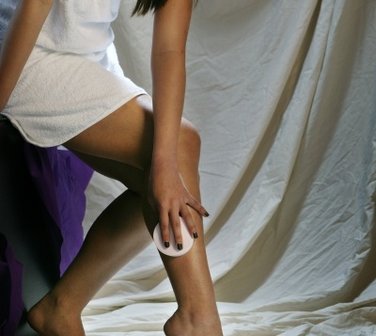The men's groomers are now business boomers
Any hipster worth his facial hair will tell you that you can’t scrimp on a haircut — and you won’t get much disagreement from yipsters, hicksters or healthsters.
Changing demographics have turned men’s grooming into a serious business, and entrepreneurs and investors are fast getting their well-groomed heads around the new trend.
Over-the-counter sales for men’s haircare, skin care, fragrances and other pamper products is a $550 million-a-year industry in Australia, according to Euromonitor International, with sales growing 40 per cent faster than those in the broader beauty sector over the past five years. James Howe, who recently opened Westons Barbershop and Shave Parlour in Northbridge, believes society has harked back to a bygone era when real men wore dress pants.
The London-born lad believes it will fuel a renaissance in barbershops in Perth, as it already has in Britain and the US.
Barbershops in these countries have attracted reviews in the likes of the New York Times Style Guide.
Some hold fashion shows and whisky tastings, and many have earned praise for bringing back an old-school community environment where men can talk about anything and everything; all with an air of understated cool, of course.
“I think we are going to see a massive comeback; the barbering scene is going to become very, very popular in Perth in the next few years, ” Mr Howe says.
Westons has done a roaring trade since opening this year and is set to add another two chairs to its existing four seats within weeks.
Mr Howe says his customers do not want $10 buzzcuts, and are willing to fork out $50 for a haircut, $40 for a shave and $20 for a beard trim.
He says there are no complaints about price because his barbers are highly trained and treatments often come with a complimentary beer or whisky.
Statistics from Euromonitor International support the trends, showing sales in men’s grooming products has grown 4.3 per cent in the five years to 2013, adjusted for inflation, which well above the 2.5 per cent increase in the beauty sector’s overall sales.
Analyst Emily Cox forecasts the men’s grooming sector to expand at twice the rate of the overall market, at 0.8 per cent annual growth for the next five years, taking it to a heavyweight $570 million-a-year industry.
But she believes this will happen in a relatively constrained beauty sector, with profits in the over-the-counter beauty market restricted by a price war sparked by discount chains like Chemist Warehouse.
Market researcher Mintel agrees that Australian sales in the female beauty sector in Australia will remain flat in the next few years, with the exception of a slight jump in coloured cosmetics.
But Mintel’s senior trends consultant, Richard Cope, expects significant financial strides in the male grooming sector.
“A decade on and metrosexuality has successfully moved into the mainstream, ” he says.
“Taking pride in — and taking greater confidence from — maintaining a well-groomed appearance now defines what it is to be ‘a man’ in today’s society.
“Rather than being a minority, men who buy grooming products to boost self-esteem or feel more attractive are now the majority.”
Anecdotal evidence suggests men have not only grown more accustomed to pampering and potions, but they are also more likely to purchase invasive cosmetic treatments like botox — an industry that is getting so big it is garnering attention from major private equity funds.
Archer Capital recently bought a stake in Laser Clinics Australia, Australia’s fastest growing provider of cosmetic injectables such as botox, laser hair removal and fillers.
Sanjay Nadkarni, owner of Stirling highway clinics which specialise in many of the new minimally invasive procedures, claims Perth is undergoing an “anti-aging phenomenon.”
He says botox is no longer the sole domain of the uber-rich but something middle-income people budget into their weekly spend.
“There are women who put away $20 from each shopping trip to save for their botox, and some stagger it with very small amounts, according to their budget, ” he says.
“The FIFO sector has also contributed to growth due to the increase in disposable income, and this includes males.
“I have patients ranging from early 20s to 70s that have various treatments. There is definitely an anti-ageing phenomenon going on.”
Dr Nadkarni says men are still somewhat shy about botox but he anticipates they will embrace it within a decade.
He says consumer growth is being spurred partly by the fast-paced changes in the number and innovative types of treatments.
This includes Sculptra, a treatment that was initially created by doctors for HIV-positive patients to help boost their own collagen production.
Injections of stem cells, bone marrow and fat are also being used to promote collagen production, as well as platelet-rich plasma in a popular version known as the “vampire facelift”.
Dr Nadkarni says one of the most popular treatments at Endovascular WA clinic was the removal of varicose veins, which no longer necessarily required surgery or general anaesthetic, and in some cases is covered by Medicare.
“It’s important to realise that the best anti-aging is still to maintain a healthy diet and exercise program and to not smoking, ” Dr Nadkarni says.
“Using good sun screens is also a simple thing to do.”
The Beauty Business
$773.6 million spent on cosmetic treatments in the year to April 2013, up 20 per cent from 2011/2012.
82% of Australians surveyed this year find it acceptable to have non-surgical cosmetic procedures to address premature ageing, increase of 75% from 2013.
One in 10 people have had non-invasive cosmetic treatment, such as botox or laser.
© The West Australian
More Beauty news: https://au.news.yahoo.com/thewest/lifestyle/









